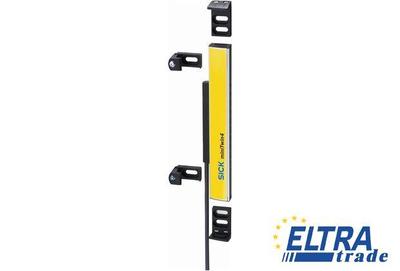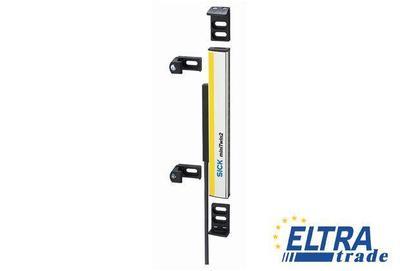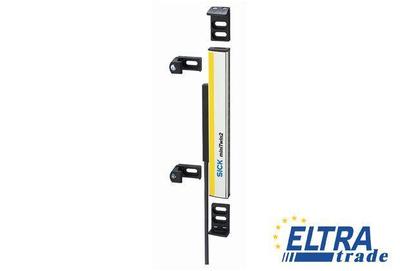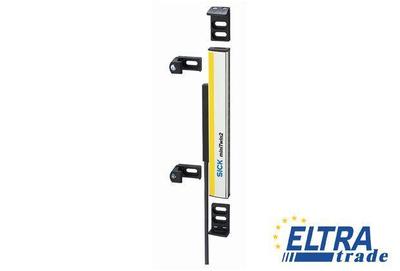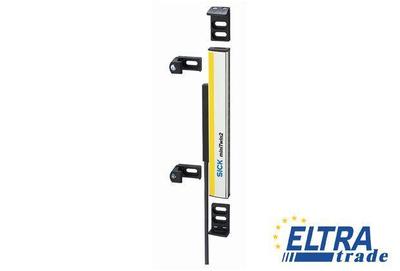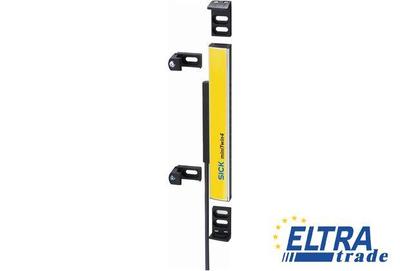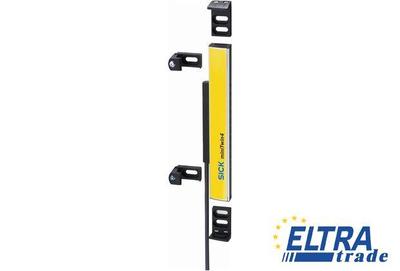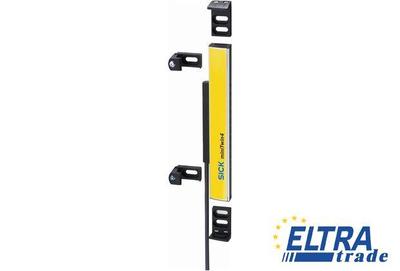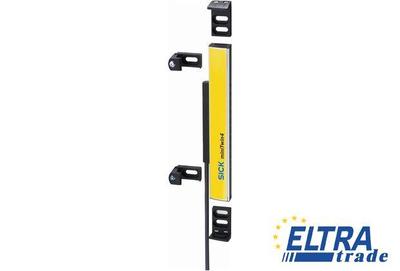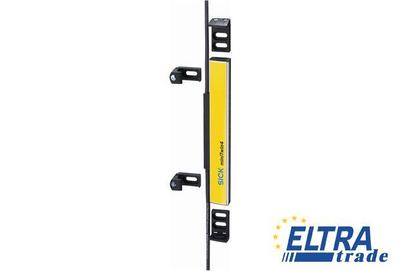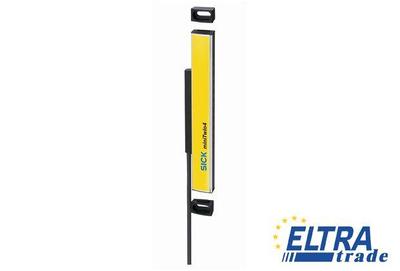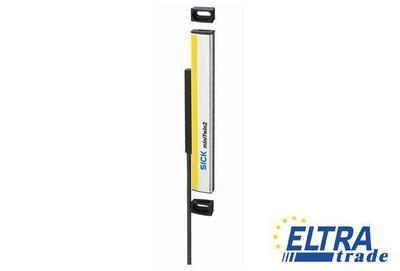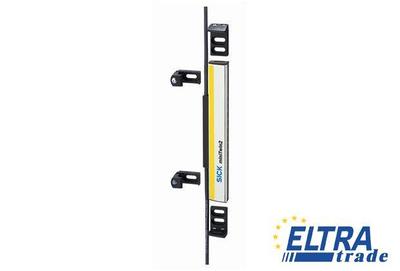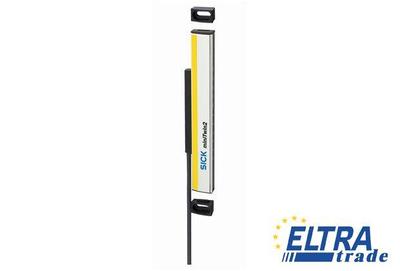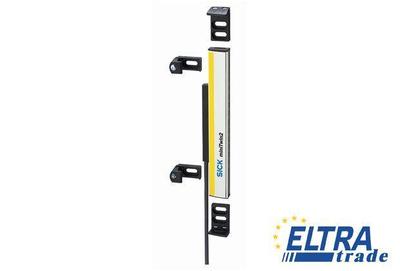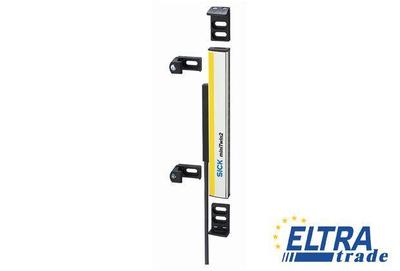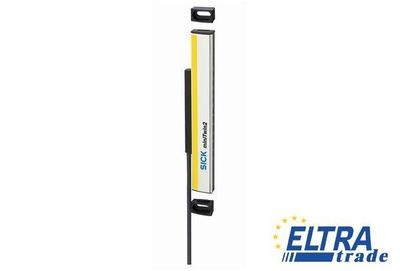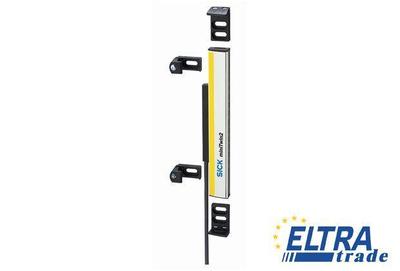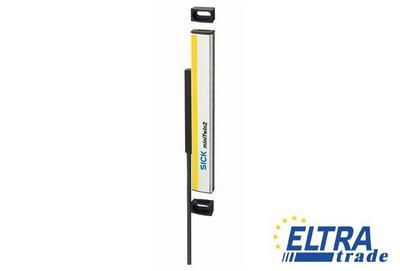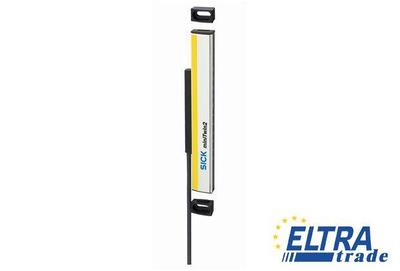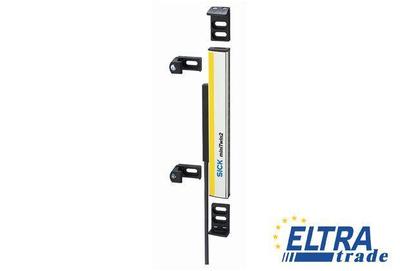Sick Safety Light Curtains
- Type 4 (IEC 61496), SIL3 (IEC 61508), PL e (EN ISO 13849)
- Compact cross section (15 mm x 32 mm) with no dead zones
- Cascadable twin stick design - sender and receiver in a single housing
- Type 2 (IEC 61496), SIL1 (IEC 61508), PL c (EN ISO 13849)
- Compact cross section (15 mm x 32 mm) with no dead zones
- Cascadable twin stick design - sender and receiver in a single housing
- Type 2 (IEC 61496), SIL1 (IEC 61508), PL c (EN ISO 13849)
- Compact cross section (15 mm x 32 mm) with no dead zones
- Cascadable twin stick design - sender and receiver in a single housing
- Type 2 (IEC 61496), SIL1 (IEC 61508), PL c (EN ISO 13849)
- Compact cross section (15 mm x 32 mm) with no dead zones
- Cascadable twin stick design - sender and receiver in a single housing
- Type 2 (IEC 61496), SIL1 (IEC 61508), PL c (EN ISO 13849)
- Compact cross section (15 mm x 32 mm) with no dead zones
- Cascadable twin stick design - sender and receiver in a single housing
- Type 4 (IEC 61496), SIL3 (IEC 61508), PL e (EN ISO 13849)
- Compact cross section (15 mm x 32 mm) with no dead zones
- Cascadable twin stick design - sender and receiver in a single housing
- Type 4 (IEC 61496), SIL3 (IEC 61508), PL e (EN ISO 13849)
- Compact cross section (15 mm x 32 mm) with no dead zones
- Cascadable twin stick design - sender and receiver in a single housing
- Type 4 (IEC 61496), SIL3 (IEC 61508), PL e (EN ISO 13849)
- Compact cross section (15 mm x 32 mm) with no dead zones
- Cascadable twin stick design - sender and receiver in a single housing
- Type 4 (IEC 61496), SIL3 (IEC 61508), PL e (EN ISO 13849)
- Compact cross section (15 mm x 32 mm) with no dead zones
- Cascadable twin stick design - sender and receiver in a single housing
- Type 4 (IEC 61496), SIL3 (IEC 61508), PL e (EN ISO 13849)
- Compact cross section (15 mm x 32 mm) with no dead zones
- Cascadable twin stick design - sender and receiver in a single housing
- Type 2 (IEC 61496), SIL1 (IEC 61508), PL c (EN ISO 13849)
- Compact cross section (15 mm x 32 mm) with no dead zones
- Cascadable twin stick design - sender and receiver in a single housing
- Type 2 (IEC 61496), SIL1 (IEC 61508), PL c (EN ISO 13849)
- Compact cross section (15 mm x 32 mm) with no dead zones
- Cascadable twin stick design - sender and receiver in a single housing
- Type 2 (IEC 61496), SIL1 (IEC 61508), PL c (EN ISO 13849)
- Compact cross section (15 mm x 32 mm) with no dead zones
- Cascadable twin stick design - sender and receiver in a single housing
- Type 2 (IEC 61496), SIL1 (IEC 61508), PL c (EN ISO 13849)
- Compact cross section (15 mm x 32 mm) with no dead zones
- Cascadable twin stick design - sender and receiver in a single housing
- Type 2 (IEC 61496), SIL1 (IEC 61508), PL c (EN ISO 13849)
- Compact cross section (15 mm x 32 mm) with no dead zones
- Cascadable twin stick design - sender and receiver in a single housing
- Type 2 (IEC 61496), SIL1 (IEC 61508), PL c (EN ISO 13849)
- Compact cross section (15 mm x 32 mm) with no dead zones
- Cascadable twin stick design - sender and receiver in a single housing
- Type 2 (IEC 61496), SIL1 (IEC 61508), PL c (EN ISO 13849)
- Compact cross section (15 mm x 32 mm) with no dead zones
- Cascadable twin stick design - sender and receiver in a single housing
- Type 2 (IEC 61496), SIL1 (IEC 61508), PL c (EN ISO 13849)
- Compact cross section (15 mm x 32 mm) with no dead zones
- Cascadable twin stick design - sender and receiver in a single housing
- Type 2 (IEC 61496), SIL1 (IEC 61508), PL c (EN ISO 13849)
- Compact cross section (15 mm x 32 mm) with no dead zones
- Cascadable twin stick design - sender and receiver in a single housing
- Type 2 (IEC 61496), SIL1 (IEC 61508), PL c (EN ISO 13849)
- Compact cross section (15 mm x 32 mm) with no dead zones
- Cascadable twin stick design - sender and receiver in a single housing
- Type 2 (IEC 61496), SIL1 (IEC 61508), PL c (EN ISO 13849)
- Compact cross section (15 mm x 32 mm) with no dead zones
- Cascadable twin stick design - sender and receiver in a single housing
- Type 2 (IEC 61496), SIL1 (IEC 61508), PL c (EN ISO 13849)
- Compact cross section (15 mm x 32 mm) with no dead zones
- Cascadable twin stick design - sender and receiver in a single housing
Sick is a renowned light curtain manufacturer offering a wide range of products for various industrial applications. Let's take a closer look at Sick light curtains.
Working Principle of Sick Light Curtains
Sick light curtains operate on the principle of interrupting light beams to detect the presence of objects or people in the protected area. These devices are designed for accident prevention, access control, and industrial safety.
A typical Sick light curtain alignment consists of a transmitter block and a receiver block. These blocks are located facing each other, while the transmitter block emits a series of light beams toward the receiver block. The transmitter emits several parallel beams of infrared or visible light. The number and distance between these beams depend on the resolution and configuration of the specific light curtain model.
The receiver block opposite the transmitter block contains photosensitive elements such as photodiodes or phototransistors. These elements detect the light beams emitted by the transmitter. When an object or person enters the protected area and blocks one or more light beams, the receiver detects an interruption in the light signal. This interrupt is interpreted as the presence of an object in the detection field of the light curtain.
When an interruption in the light beam is detected, the light curtain triggers a safety reaction. This response may include the activation of safety measures such as stopping or preventing the operation of hazardous equipment, the activation of warning signals, or the initiation of other safety protocols to keep workers safe.
SICK light curtains often have an adjustable resolution and protective height. Resolution refers to the distance between individual light beams allowing smaller objects or body parts to be detected. The protective height determines the vertical coverage area of the light curtain according to the specific safety requirements of the application.
Advanced SICK light curtains can include additional safety features to enhance their capabilities. These may include muting, blanking, or cascading. Muting allows certain objects or materials to pass through the light curtain without triggering a safety stop, while blanking allows predefined areas to be temporarily ignored. Cascading allows you to connect several light curtains to protect large areas or areas.
SICK light curtains often have diagnostic functions to ensure they function properly. These may include optical path self-tests, fault diagnostics, and communication interfaces for integration into security systems. These functions help to monitor the status and performance of the light curtain and detect any faults or problems that could compromise its operation.
Installation and Maintenance of Sick Light Curtains
The installation and maintenance of Sick light curtains are critical to ensure their proper functioning and continued reliability, the protection of personnel, and the prevention of access to hazardous areas.
Installation of Sick light curtains:
- Mounting position. Determine the appropriate mounting position for the transmitter and receiver units of the light curtain. Make sure they are aligned facing each other and there is a line of sight between them.
- Height and reach. Mount the light curtain at an appropriate height to cover the entire area to be protected. Consider the required guard height and resolution depending on the security requirements of the application.
- Mounting brackets. Use the supplied mounting brackets or accessories to securely fasten the light curtain units to the equipment or structure. Follow the manufacturer's instructions for recommended installation procedures.
- Wiring and connections. Connect the power and control cables according to the manufacturer's instructions. Follow wiring diagrams and provide proper grounding and insulation for electrical safety.
- Alignment and calibration. Align the transmitter and receiver units to make sure the light beams are parallel and correctly oriented. Use alignment aids such as pins or alignment indicators provided by Sick. Perform any necessary calibration procedures as specified in the product documentation.
- Integration with security systems. Integrate the light curtain with a safety management system or a safety relay to provide appropriate safety measures when the light beams are interrupted. Follow the manufacturer's recommendations for proper integration and wiring.
- Software installation. Install the latest version of the Sick light curtain software to keep your equipment running as smoothly as possible.
Maintenance of Sick light curtains.
- Regular inspection.
- Functionality checks.
- Diagnostics and monitoring.
- Maintenance schedule.
- Training and expert support.
- Factors to Consider when Choosing Sick Light Curtains
- When choosing a Sick light curtain, you need to consider several factors to ensure that the light curtains you choose meet your safety and operational needs. Here are a few key factors to consider.
- Safety requirements.
- Application environment.
- Detection range and coverage.
- Resolution and distance between beams.
- Possibility of integration.
- Installation flexibility.
- Diagnostic and monitoring functions.
- Regulatory Compliance.
- Cost and return on investment.
Benefits and Applications of Sick Light Curtains
Sick light curtain solutions have a number of advantages and are widely used in various industries.
Advantages.
- Personnel safety.
- Access control.
- Contactless detection.
- A high resolution.
- Flexibility and adaptability.
- Fast response time.
Applications.
- Machine safety.
- Loading and unloading works.
- Presses and stamping machines.
- Packaging and logistics.
- Robotic cells.
- Automotive industry.
- Printing and paper processing.
- Pharmaceutical and food industry.
